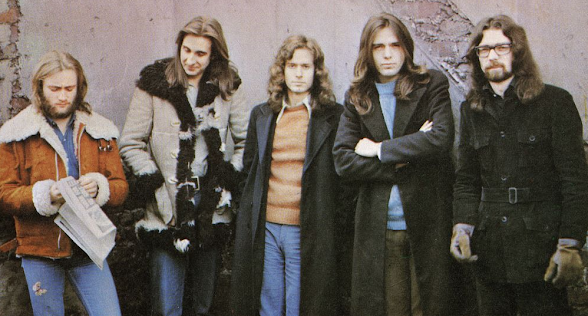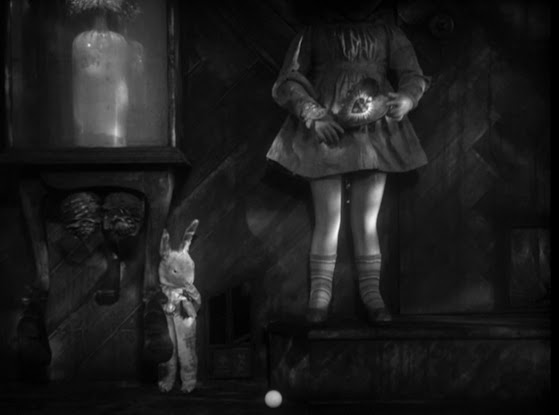Fans of Pin-Up Went Down will find this debut record from France’s newest export Chenille (let’s just call them that for the sake of sanity) quite remarkable. That’s because what these two musicians have done (with help from Pryapisme skinsman Aymeric Thomas on session drumming) actually works to build upon the Pin-Up Went Down formula, and hey – it even has the same frontwoman, Asphodel. You might even call this act Pin-Up Went Down 2.0, even though this time around there is much more of an experimental factor, almost to the level of Unexpect and most certainly Carnival In Coal, as well as the obvious Diablo Swing Orchestra influence, not excluding Mr. Bungle (who inspired pretty much all of this stuff to be honest.)
When you listen to this one don’t expect one approach to continue for too long. There’s disco, death metal, pop music, freaky atmospheres, black metal blasts, electronic bits, Seussian horns and even Dahl-friendly Oompa Loompas. Yes, I said Oompa Loompas. You’ll actually hear them chiming in on this weird circus music around the mid-point of the album, particularly on the cut “No Guts = No Masters.” You may also hear some lounge, drum and bass and heavy bits of groove. The album even incorporates chiptunes. It’s not just an “everything but the kitchen sink” kind of album, because Samen also includes the kitchen sink, as well as the saxophone. At this point, we may as well call Chenille an avant-garde act, because there is just no other way to put it. I’m telling you right now listener, I had no idea what I was getting into with this one at first and was wondering what in the living hell I was listening to when opener “Rules Of The Show” came onto the scene. I said to myself, “Disco pop? Who in the hell sent me this?” Though as I kept listening, I suddenly realized that there was more to this than I ever could have imagined.
Samen is the kind of record where one will discover something new with each listen and must be absorbed thoroughly through repeated listens. You just won’t get it the first time, because there’s just too much to ascertain. It’s all going on at one time, in true experimental “paint on the wall” fashion. Some people don’t even see this as music, but that’s okay as it is literally marked as an exhibition, as if it was an entry in an art gallery. This classification fits, because Samen is literally abstract art in the form of music. Additionally, I can’t even discern as to what some of the songs might be about and feel that this is is one record where the experience will be enjoyed more with the actual booklet in hand. Asphodel’s lyrical matter is extremely difficult to understand, though I believe opener “Rules Of The Show” is intended to make a sort of strong feminist statement. As for grasping at straws, “Well-Oiled Machine” seems to have something to do with peer-to-peer file transferring and Who’s The Boss. I guess it is appropriate to mention that while I was born in the eighties, I never took interest in that show, nor The Wonder Years. Aside from the weird scientific excursions taken here, we also have a couple of catchier (yes, even in this style) numbers in the form of “Purple Tastes Like White” and “I Hope You Sleep Well” where the Oompa Loompas appear along with death metal vocals. Baptiste Bertrand comes into play as he manages the guitars, bass, programming and the vocals on “Well-Oiled Machine.”
Carnival In Coal was the literal birth of French experimental metal, so it makes sense that Pin-Up Went Down and this new incarnation in Chenille would only continue to expand on some of the greatest things in this genre. In all honesty, Pin-Up Went Down was a hard sell for me because it was too poppy and not experimental enough, nor did it have the amount of extremity that I remembered from Carnival in Coal or other works by Arno Strobl. Yet in this new, daring format I find Chenille to be one of the most interesting avant-garde acts of the last decade. This is what happens when the formula is done right, and if you don’t understand it or just don’t get it, that is entirely acceptable. After all, Chenille aren’t meant for everyone and not everyone will be able to get into them very easily. But I don’t think that Asphodel and Bertrand would have it any other way. Samen challenges the mind, but it also twists and distorts easily accessible pop music in a way that would make most American contemporary labels scratch their heads. I could see several executives now with confused looks on their faces, wondering how and to who they would actually market this record. Which is why those gentlemen aren’t working with this act and the fine folks over at Apathia Records are.
I am not sure about some of the other writers here at New Noise, but I have always been one more into experimental and overly weird approaches. So chances are that if you’re going to combine a shoehorn with a trombone and filter that through a bubble bath somehow, I’ll be game for the experience. That being noted, you need to open up your mind extravagantly wide for this one as it can go from depraved and ugly to rather pretty in a mere second. Chenille can offer a bite or they can be soft and fluffy. Sometimes they may just turn into a type of amorphous antimatter. It simply depends on the song. Although I’ve talked about a couple of the tracks here already, my intention is not to spoil such an interesting record for you. I haven’t even explained every style utilized on this record, particularly because I haven’t been able to catch them all. I will say that the most extreme moment on the disc is the French language cut, “Hemn Be Rho Die Samen” which also closes the disc, showing listeners right at the very end how demonic and hopeless this act can sound when they want to. I have a feeling that most of the more elite metalheads out there will probably just check out that one, but I recommend that the more open-minded of listeners give the entire album a chance. There’s simply nothing like it and hasn’t been any similar approaches for quite a while. Even when there were, nothing this over the top was ever attempted. I applaud Chenille and hope that this is only the beginning of something grand. As a minor side note, you might have noticed that the band’s moniker is a literal caterpillar which was intended. After all, that is what Chenille literally translates to in English. It’s quite clever. Just as clever as this album as a matter of fact. From: https://newnoisemagazine.com/reviews/album-review-ooooooooooo-samen/


























